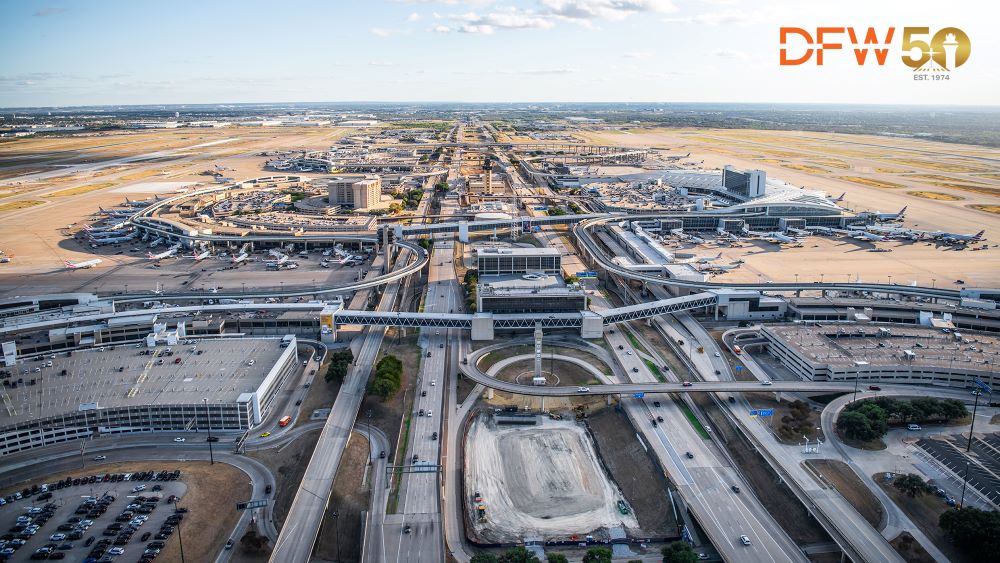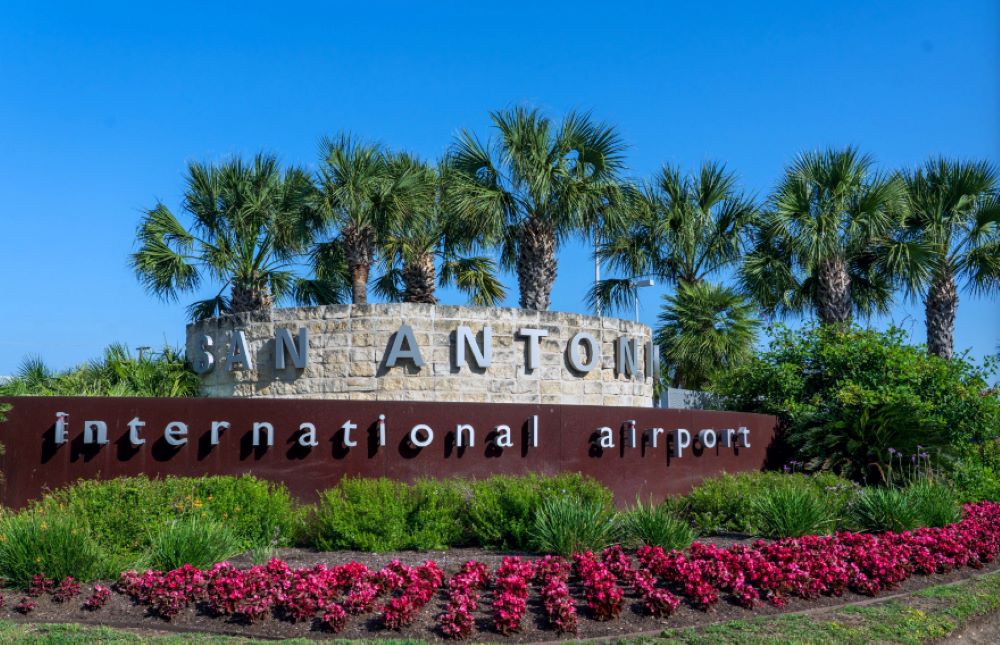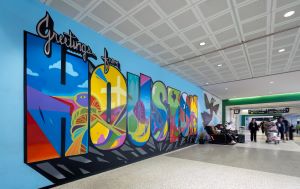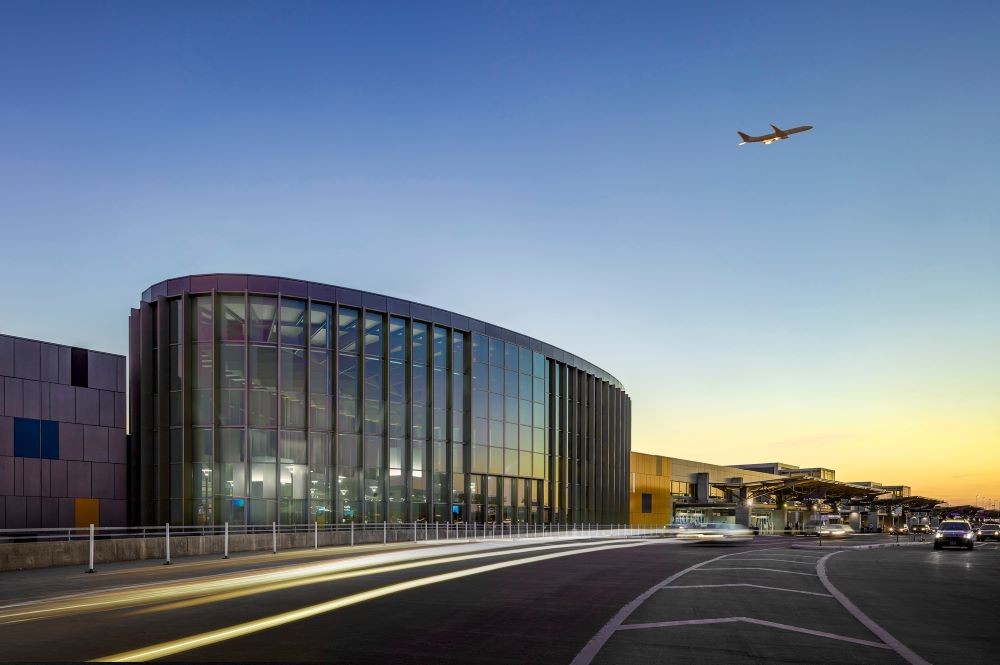Headquartered in Manchester, England, Routes is an organization focused exclusively on global air service route development with activities that include connecting decision-makers from airlines, airports and related stakeholders at year-round global and regional events.
In 2022, I attended their flagship Routes World event in Las Vegas, where I met senior executives from Dallas Fort Worth International Airport (DFW). The conversation centered on how cities and destinations, through their CVBs and DMOs, can work with their local airport to create and support demand for and attendance at high-yield business events, including sales and marketing alliances and new routes.
Celebrating its 50th anniversary this year, DFW is the world’s second-busiest airport and second-largest economic driver in Texas, producing over $37 billion in annual economic impact. Owned by the cities of Dallas and Fort Worth, the airport closely collaborates with Visit Dallas and Visit Fort Worth, and liaises with other area CVBs, on efforts to bring group business and other economic opportunities into the North Texas region and beyond.
Currently undergoing a multi-year expansion, development and improvement program as it celebrates its 25th anniversary this year, Austin-Bergstrom International Airport, or AUS, likewise has a front seat in the business and economic development of the Central Texas region.
As Routes’ director of events Steven Small said at the Vegas show, “the world’s air services are built on partnerships between airlines and airports and the destination they serve.” By the numbers, here are how DFW, AUS and other major Texas aviation hubs support the group market and economic development by connecting people through business and leisure travel.
[Related: Visit Frisco's Christina Decker on the Major New Meetings Offerings in This Metroplex Gem]
DFW Is Solid Gold
Talk about planting a seed. Built on 17,000 acres of farmland amid vast open space, Dallas Fort Worth Regional Airport launched in 1974 as the world’s largest airport with four terminals, three runways, nine operating carriers and 66 gates, serving seven million passengers in its debut year.

Twice the size of any U.S. airport built before it, DFW took root and grew. Celebrating its golden anniversary this year, DFW spans nearly 27 square miles and has its own zip code, city designation, police force and fire, emergency and medical departments.
In 1986, the renamed Dallas Fort Worth International Airport welcomed 43 million passengers. The current annual volume is above 80 million as DFW now hosts 28 airlines, including 16 international carriers, with service to 256 destinations worldwide. Last year, DFW’s 22 freights carriers handled 791,192 tons of global cargo. Milestones along the way include becoming the first commercial airport to host a space shuttle landing (1989) and first North American airport to go carbon neutral (2016).
Three airside hotels with meeting facilities include the Grand Hyatt DFW inside Terminal D, offering 34,000 square feet of space, and Hyatt Regency DFW, with 92,000 square feet of space by Terminal C.
Targeting completion by 2026, the new $1.6 billion Terminal F will add 15 new gates, with plans for a second phase to follow. The revamp of aging Terminal C, the airport's busiest terminal, is targeting 2028.
[Related: The Dallas-Fort Worth Metroplex Is a Hotel Development Hotbed]
AUS: The Economic Powerhouse of Central Texas

Rae Martinez, public information and marketing program manager for AUS, discusses the airport’s role as a significant platform for economic development in the Central Texas region:
“Austin-Bergstrom International Airport is not just a gateway to Central Texas; it is a pivotal economic driver for the region and the state. Since opening in 1999, AUS has played a critical role in the economic vitality of Austin and its surrounding areas. Committed to facilitating travel and cargo, AUS has become an asset in connecting people, ideas, knowledge, goods and services to Central Texas and the world.
AUS has experienced remarkable growth and transformation over the past 25 years. As a crucial hub for domestic and international travel, the airport supports over 74,000 direct and indirect jobs and contributes billions to the local economy annually.
The ongoing expansion of AUS parallels the dynamic growth of the Austin region. As Austin and San Antonio continue to expand along the I-35 corridor, often referred to as the next Metroplex, the airport's capacity and infrastructure must evolve to meet increasing demand.
In 2021, AUS launched Journey With AUS to modernize and transform AUS into a large-sized airport. Current projects under this expansion program include the construction of a new 20-gate concourse, new taxiways and a new, larger arrivals and departures hall. The program is dedicated to meeting the current and future needs of our growing region while staying true to our roots and elevating the passenger journey with an authentic Austin and Central Texas experience. These developments are essential to maintaining Austin's competitive edge in attracting business and leisure travelers.

AUS' strategic alliances with Visit Austin and other regional city chambers and DMOs play a role in promoting premier destinations for group business and events. Collaborative marketing initiatives and joint efforts to share airlines and routes with local businesses and communities have significantly boosted the local economy.
For example, AUS and Visit Austin are currently working together to share compelling marketing tactics that highlight Amsterdam’s gateway to Europe and beyond. These efforts are designed to attract local businesses to a diverse array of transatlantic networking, as well as leisure tourists.
AUS also serves as a channel for connecting people and fostering the exchange of ideas and knowledge. The airport's state-of-the-art facilities and extensive route network make it easier for businesses to operate in Austin, facilitating the seamless movement of goods and services. This connectivity is particularly important for the group and business events market, where the ability to bring together participants from around the world is great for success.
AUS' commitment to excellence in service and infrastructure ensures that Austin remains an attractive destination for business and leisure travelers. As the region continues to grow and evolve, AUS will remain at the forefront, driving economic development and fostering a weird vibrant, connected community.
Austin-Bergstrom International Airport is more than a travel hub; it's a part of Central Texas' economic heartbeat. Through innovative partnerships, continuous expansion and a commitment to connecting people and ideas, AUS is shaping Austin’s future and the state of Texas. Looking ahead, AUS' ongoing success will be key to the region's growth, helping Austin stay a lively center for business, culture and innovation.”
[Related: Taking Off: Why You Should Consider Frisco, Texas, for Your Next Meeting or Event]
San Antonio and Houston Prepare for Take Off
Contributing approximately $5 billion annually to San Antonio’s business travel and tourism-driven economy, San Antonio International Airport (SAT) is expanding to meet runaway regional growth.

Hitting record-breaking numbers each month from May to December last year, SAT reached a new all-time yearly high of 10.7 million passengers, up 3% from the previous peak of 10.4 million passengers in 2019. That’s an average of 27,000 people per day, and city officials believe the annual volume could exceed 15 million passengers in the next 20 years.
At the same time, population growth is surging in the rapidly growing San Antonio metro area, with more than four million people projected by 2050.
To keep pace with the associated air travel demand, SAT is investing $2.5 billion in a new terminal with up to 17 domestic and international gates to accommodate projected growth through 2040. Targeting mid-2028, the new building will include larger gate areas, modernized passenger screening areas and roadway work to ease congestion and improve traffic flow. Additional investments include renovating existing Terminal A and airfield upgrades.

Houston’s George Bush Intercontinental Airport, or IAH, is cementing its position as a premier global gateway with the anticipated completion this year of the expansion of its international wing, Terminal D, following an initial refresh in 2023.
Representing the second of an unprecedented three-phase, $1.5 billion capital
improvement program, the project adds six international-capable wide-body aircraft gates that can be converted to 10 narrow-body gates. Other updates include one of the nation’s largest security checkpoints with enhanced screening efficiencies.
The final phase, slated for summer 2025, introduces an International Central Processor ticketing hall to improve the overall customer experience and traffic flow.
“Houston Airports hold strong as a primary economic engine for the City of Houston, generating $36.4 billion in annual economic impact for the region,” stated Jim Szczesniak, director of aviation for Houston Airports, in a release. “Our new terminal is only anticipated to widen our crucial impact on Houston’s economy.”
[Related: How Houston Is Making Big Strides in the Meetings and Conventions Market]
Venues Dedicated to Texas Stories of the Skies
In 1909, the U.S. Army purchased its first airplane from Orville and Wilbur Wright. The following year, Army 1st Lt. Benjamin Foulois piloted the two-propeller biplane above Fort Sam Houston in San Antonio, marking the first-ever military flight in the U.S. and first flight in Texas.
Filmed at San Antonio’s former Kelly Field, Wings (1927), a silent WWI movie described by late Academy of Motion Picture Arts and Sciences president Tom Sherak as “the Star Wars” of its time, won the first-ever Best Picture Oscar, along with “best engineering effects” honors, at the first-ever Academy Awards in 1929.

Home of American Airlines, which opened its new $350 million-plus Skyview headquarters in Fort Worth last year, and Southwest Airlines, Texas has a rich history of leadership in aviation manufacturing, hospitality and science exploration. Here are some group-capable venues dedicated to Texas stories of the skies.
- Leave space in your schedule for tours and events at Space Center Houston. Serving as the official visitor center of the NASA Johnson Space Center, this storied Smithsonian-affiliated museum is Houston’s top-ranked attraction for international visitors. From 5,000-plus-capacity outdoor events on the landmark Independence Plaza to conference room, theater and gallery rentals, the center is equally a group orbit, with restaurant-style food exclusively from Wolfgang Puck Catering.
- Houston is also home of the Lone Star Flight Museum, which incorporates the Texas Aviation Hall of Fame, rare commercial and military aircraft, and hands-on simulated flight experiences.

- Another eagle has landed at one of the world’s few museums dedicated solely to commercial aviation, the American Airlines CR Smith Museum in Fort Worth. Named for late aviation pioneer and former American Airlines president Cyrus Rowlett Smith, the museum offers a sight-and-sound, hands-on, window-seat look at the world of flight.
- Chartered in 1961 as the Confederate Air Force with the mission of restoring and preserving WWII-era combat aircraft and renamed in 2002, the Dallas-based Commemorative Air Force today has a fleet of more than 175 aircraft representing more than 60 different types, including planes from foreign countries and other military conflicts since WWII. With 82 units across the U.S. and around Texas including San Antonio, Houston and Odessa, the CAF hosts year-round airshows, events, special appearances and in some cases, rides aboard restored warbirds.
- Lubbock groups can learn about the history of the WWII Military Glider Program at the event-capable Silent Wings Museum.







